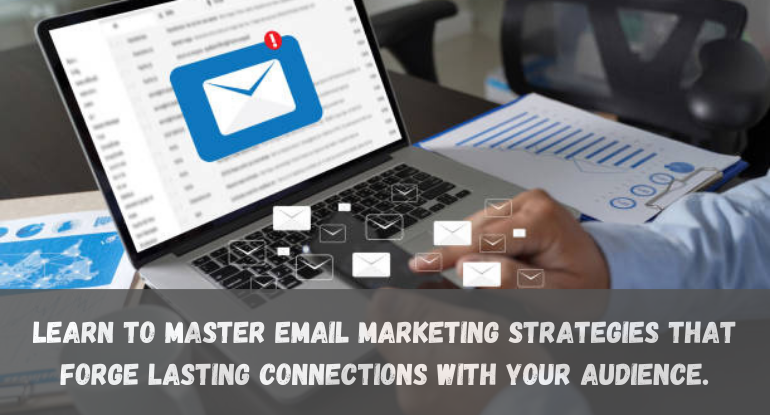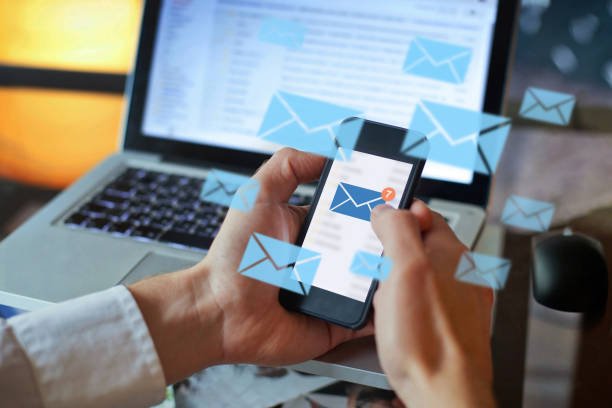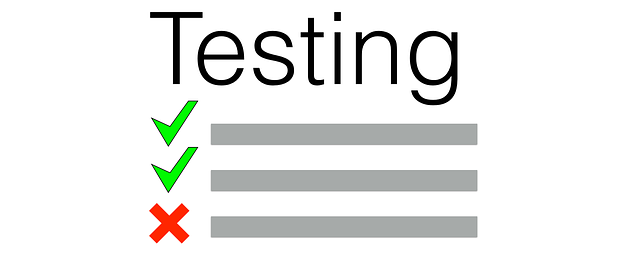
Mastering Email Marketing Strategies: Building Lasting Connections
Email marketing remains a cornerstone of digital marketing strategies, providing a direct line of communication with customers and prospects. Despite the rise of various digital channels, email continues to deliver high ROI when executed effectively.
To harness its potential, mastering email marketing strategies is crucial for businesses of all sizes.
This comprehensive guide delves into the core elements, best practices, and innovative techniques to maximize the impact of your email campaigns.
What is Email Marketing?

Email marketing is a digital marketing strategy that involves using emails to communicate with potential or existing customers. It's a way for businesses to connect, engage, and build relationships with their audience by sending personalized messages, promotions, updates, or valuable content directly to their email inboxes.
This marketing approach allows companies to reach a wide audience and tailor their messages based on the recipient's preferences, behaviors, and demographics.
Email marketing can encompass various purposes, including driving sales, nurturing leads, sharing news and information, promoting products or services, or simply keeping the audience informed and engaged with the brand.
Ways of Mastering Email Marketing Strategies
#1. Understanding Your Audience

Understanding your audience is the foundational step toward forging genuine connections. It involves delving deep into who comprises your audience and what makes them tick.
This process isn't just about numbers; it's about comprehending the intricate nuances that define the individuals receiving your emails.
Segmentation lies at the heart of this understanding. By categorizing your audience based on factors like age, location, gender, past interactions, purchase history, and preferences, you're essentially creating distinct groups with common traits. This segmentation enables tailored and precise communication.
Imagine sending the same generic email to a diverse audience. It's akin to casting a wide net hoping to catch various fish but failing to account for their unique preferences or habitats. However, when you tailor your content to specific segments, it's like using different bait and techniques to attract precisely the fish you want. It's about relevance.
This relevancy is what sparks engagement. When recipients feel that the content speaks directly to their needs, interests, or challenges, they're more inclined to open, read, and act upon your emails. It's the difference between receiving a generic advertisement and a personalized recommendation from a trusted friend.
Moreover, this personalized approach doesn't just improve engagement; it significantly boosts conversion rates. When your message resonates deeply with a recipient, it's more likely to prompt them to take the desired action—whether it's making a purchase, signing up for a service, or sharing your content.
Understanding your audience is an ongoing process. It involves continuously analyzing data, gathering feedback, and adapting to evolving preferences. By staying attuned to your audience's needs and desires, you'll forge stronger connections and foster brand loyalty that transcends mere transactions.
#2. Compelling Content Creation
Crafting compelling content for your email campaigns is akin to creating a masterpiece—a blend of artistry and strategy that captivates your audience. It's more than just stringing words together; it's about weaving a narrative that resonates deeply with your readers.
The journey begins with your subject line, the gateway to your email. It's your chance to make that critical first impression. An attention-grabbing subject line is like an intriguing headline that entices someone to pick up a book—they're compelled to explore further.
Once your readers venture inside your email, the content takes center stage. It's not merely about selling a product or service; it's about providing value. Your content should be a treasure trove of information, entertainment, or solutions to your audience's pain points. Think of it as a conversation with a friend, informative, engaging, and valuable.
Storytelling breathes life into your emails. Narratives have a unique ability to evoke emotions and create connections. Whether it's sharing customer success stories, behind-the-scenes glimpses of your brand, or anecdotes that resonate with your audience's experiences, stories humanize your brand and make it relatable.
Visual elements are powerful tools in your arsenal. Incorporate eye-catching images, videos, infographics, or GIFs to complement your written content. Visuals not only break the monotony but also convey messages swiftly and memorably. A picture truly can speak a thousand words, especially in a crowded inbox.
Moreover, adopt a conversational tone. Avoid sounding overly formal or sales-oriented. Instead, aim for authenticity and genuineness. Write as if you're speaking directly to your audience, fostering a sense of connection and rapport.
Remember, the goal isn't just to inform; it's to leave a lasting impression. Craft your emails with the intention of creating an experience for your readers—one that they'll remember long after they've closed the email. Compelling content isn't just about what you say; it's about how you make your audience feel. It's about forging a bond that transcends the digital realm.
#3. Personalization at Scale
Personalization at scale is the secret sauce that transforms your emails from generic messages into tailor-made experiences for each recipient. It's not just about addressing someone by their name; it's about understanding their preferences, behaviors, and needs to deliver precisely what they're looking for.
To achieve this, harness the power of data. Dive deep into the insights you have about your subscribers—their browsing history, past purchases, interactions with your emails, and any other relevant information. This wealth of data forms the foundation for creating personalized experiences.
Dynamic content is a game-changer. It allows you to customize different sections of your email based on the recipient's interests or actions. Imagine an email that showcases products or articles specifically recommended for each individual based on their past engagement—that's the magic of dynamic content.
Recommendation engines are another powerful tool in your arsenal. They analyze a subscriber's behavior and preferences to suggest products, services, or content that align with their interests. By integrating these engines into your emails, you're essentially offering a personalized shopping assistant or content curator.
Moreover, leverage behavioral triggers to send timely and relevant messages. Whether it's a follow-up email after a specific action, a birthday greeting, or a reminder about abandoned items in a cart, these triggers are automated responses based on a subscriber's actions, ensuring your emails are not just personalized but also timely and purposeful.
The essence of personalization at scale lies in making each subscriber feel seen and understood. When they receive an email that speaks directly to their interests or needs, it's not just another message in their inbox—it's a valuable interaction that fosters a deeper connection with your brand.
Embrace the power of personalization beyond just surface-level details. Dive into the nuances of your audience's behavior and preferences, and use this understanding to create hyper-personalized experiences that resonate with each individual on a profound level.
#4. Building Trust Through Transparency
Establishing trust forms the bedrock of enduring relationships in email marketing. It's not just about selling; it's about fostering a genuine connection built on honesty, respect, and transparency.
Transparency is key. From the get-go, be clear about your intentions. Let your subscribers know what they can expect from your emails, whether it's product updates, exclusive offers, or informative content. Setting these expectations upfront builds credibility and shows respect for their time and inbox space.
Moreover, transparency extends to your products or services. Be open and honest about what you offer. Highlight the benefits, but also address any limitations or potential drawbacks. This upfront approach eliminates surprises and cultivates trust by demonstrating a commitment to authenticity.
Respecting subscribers' privacy is non-negotiable. Honor their preferences regarding communication frequency, content types, and the information they wish to receive. Provide easy-to-use options for subscribers to manage their preferences or opt-out if they choose to. Respecting their choices showcases your commitment to their autonomy and builds a foundation of trust.
Offering value without immediately asking for something in return is a powerful trust-building strategy. Provide valuable content, tips, or resources that genuinely benefit your audience. By giving before asking, you demonstrate your dedication to their needs rather than just pushing for sales or conversions.
A trustworthy relationship with your audience isn't just about the immediate transaction; it's about fostering a long-term connection. When subscribers trust your brand, they're more likely to engage with your emails, recommend your products or services, and remain loyal customers over time.
Remember, trust takes time to build but can be shattered in an instant. Uphold transparency, respect boundaries, and consistently deliver value to cement a bond of trust that forms the cornerstone of enduring connections with your audience.
#5. Optimization and Testing

Optimization and testing are the engines that drive the evolution of your email marketing strategy. It's a dynamic process that involves fine-tuning various elements to enhance the effectiveness of your campaigns continually.
A/B testing, also known as split testing, is a fundamental tool in this process. It allows you to experiment with different versions of your emails by testing specific elements like subject lines, visuals, calls-to-action, or even the timing of your sends. This experimentation helps unveil what resonates best with your audience.
Subject lines, for instance, are the gateway to your email. Testing different variations—whether it's tone, length, or wording—provides invaluable insights into what grabs your audience's attention and prompts them to open the email.
Visual elements play a significant role in engagement. Testing different images, videos, or graphics helps identify which visual content resonates most with your subscribers and encourages interaction.
Calls-to-action (CTAs) are crucial for promoting desired actions. Testing different wording, colors, placement, or even the shape of buttons can significantly impact click-through rates and conversions.
Moreover, timing is key. Testing the timing of your email sends—whether it's the day of the week or the hour of the day—can reveal when your audience is most responsive and likely to engage with your content.
The beauty of optimization through testing lies in the insights it uncovers. It's not about assumptions but about data-driven decisions. By analyzing the results of these tests, you gain a deeper understanding of your audience's preferences and behaviors.
However, optimization and testing aren't one-time endeavors; they're continuous processes. What works today might not work tomorrow as audience preferences evolve.
Embrace a mindset of constant improvement, iterating based on the insights gathered, to ensure your email marketing remains relevant and effective. This iterative approach empowers you to refine and enhance your campaigns, ultimately maximizing their impact and achieving better results.
#6. Automation for Efficiency and Personalization
Automation is the superhero in your email marketing arsenal, blending efficiency with personalization. It's the secret ingredient that enables you to scale your efforts while maintaining a personalized touch in every interaction with your subscribers.
Imagine having a personal assistant dedicated to nurturing relationships with each subscriber—automation makes that a reality. By setting up automated workflows triggered by specific actions, you can create tailored and timely responses that resonate with your audience.
Welcome sequences are the virtual handshake of your brand. Automating these sequences ensures that every new subscriber receives a warm and personalized introduction, setting the tone for a meaningful relationship right from the start.
Abandoned cart reminders are a prime example of automation's power to recover potential lost sales. When a subscriber leaves items in their cart without completing the purchase, automated reminders can gently nudge them to revisit and complete the transaction.
Re-engagement campaigns are vital for reconnecting with inactive subscribers. By automating these campaigns based on specific triggers like lack of engagement or inactivity, you can reignite interest and bring back subscribers who might have disengaged.
Automation doesn't just save time; it ensures consistent and timely communication. It's like having a tireless team member working around the clock, delivering relevant and personalized messages precisely when they're needed.
The beauty of automation lies in its ability to personalize at scale. It's not just about sending generic emails automatically; it's about using data to craft tailored messages that resonate with each individual subscriber, fostering a sense of connection and relevance.
However, while automation streamlines processes, it's crucial to maintain the human touch. Balance efficiency with authenticity—ensure that automated messages feel personal and not overly robotic. Inject warmth, empathy, and genuine value into your automated communications to maintain that personal connection with your audience.
Embrace automation as your ally in optimizing efficiency without compromising personalization. It's the tool that allows you to deliver the right message to the right person at the right time, all while nurturing meaningful relationships with your audience.
#7. Nurturing Relationships Beyond the Inbox
Expanding your reach beyond email marketing opens doors to a broader landscape where your audience can engage with your brand across various platforms. It's about creating a cohesive and immersive brand experience that extends far beyond the confines of the inbox.
Social media platforms, blogs, forums, and other channels offer unique avenues to connect with your audience. Integrating these channels into your marketing strategy allows you to amplify your brand's voice and create a consistent narrative across multiple touchpoints.
Social media, for instance, provides a vibrant space for conversations and interactions. By integrating your email marketing efforts with platforms like Facebook, Instagram, Twitter, or LinkedIn, you create a seamless transition for your audience. Encourage subscribers to follow your social accounts, share your content, and engage in discussions, fostering a community around your brand.
Blogs are another powerful tool. They offer in-depth insights, storytelling opportunities, and a platform to share valuable content beyond what fits in an email. Linking your emails to blog posts and vice versa not only drives traffic but also encourages deeper exploration of your brand's expertise and offerings.
Moreover, don't limit yourself to just one-way communication. Encourage subscribers to actively participate across these platforms. Run contests, polls, or Q&A sessions on social media that encourage audience participation. Create shareable content that prompts your subscribers to spread the word among their networks.
The goal is to create a unified brand experience. Whether a subscriber interacts with your brand via email, social media, or your blog, they should encounter a consistent tone, message, and value proposition. This consistency reinforces your brand identity and strengthens the connection with your audience.
By nurturing relationships beyond the inbox, you're not just expanding your reach; you're creating a multi-dimensional experience that allows your audience to engage with your brand in diverse and meaningful ways. Embrace these multiple touchpoints to deepen connections and cultivate a loyal and engaged community around your brand.
#8. Analytics and Iteration
Regularly analyze key metrics like open rates, click-through rates, conversions, and unsubscribe rates.
Use these insights to iterate and refine your strategies. Understanding what resonates with your audience is pivotal in consistently delivering valuable content.
#9. Compliance and Respect for Subscribers

Compliance with email marketing regulations is essential to maintain ethical practices and build credibility with your audience. Adhering to guidelines like the GDPR (General Data Protection Regulation) and the CAN-SPAM Act ensures that your email marketing efforts respect subscribers' rights and preferences.
The GDPR, for instance, focuses on protecting individuals' privacy and data within the European Union and beyond. It mandates obtaining explicit consent from individuals before sending them marketing communications, ensuring transparency about data collection and usage, and providing clear opt-out options.
Similarly, the CAN-SPAM Act, applicable in the United States, sets guidelines for commercial emails, requiring them to include accurate sender information, clear subject lines, and a visible option for recipients to opt out of future emails. Complying with these regulations not only avoids legal issues but also demonstrates a commitment to ethical and responsible marketing practices.
Respecting subscribers' choices and preferences is paramount. Provide easily accessible and straightforward options for subscribers to manage their preferences, whether it's adjusting frequency, choosing content preferences, or opting out altogether. Respecting their decisions builds trust and shows that you value their autonomy.
Moreover, respecting their inbox space means sending relevant and valuable content. Avoid spammy tactics like excessive promotional content, misleading subject lines, or sending emails too frequently. Instead, focus on delivering content that aligns with subscribers' interests and adds genuine value to their inbox.
By prioritizing compliance with regulations and respecting subscribers' choices, you not only mitigate legal risks but also foster a positive relationship with your audience. Demonstrating your commitment to ethical practices builds trust, credibility, and goodwill, laying the foundation for long-term engagement and loyalty.
Conclusion
Email marketing remains a potent tool for building lasting connections with your audience. By understanding your audience, crafting compelling content, personalizing experiences, nurturing trust, and leveraging automation and analytics, you can create impactful campaigns that foster enduring relationships, ultimately driving business success.
Building lasting connections through email marketing is an ongoing journey that requires a blend of creativity, strategy, and empathy. Embrace these strategies to transform your emails into powerful vehicles for meaningful connections with your audience.